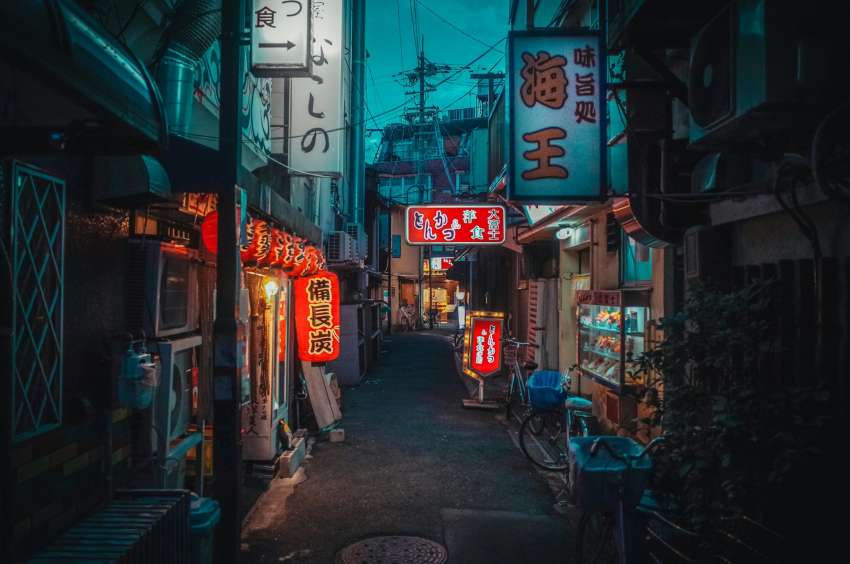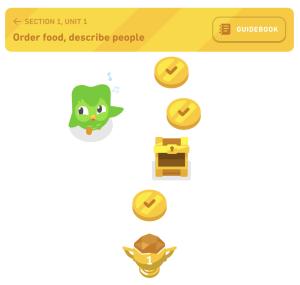 Photo by masahiro miyagi on Unsplash
Photo by masahiro miyagi on Unsplash
 I've just completed section one of the Japanese course on Duolingo (in its current form on 29th March 2024) and I thought it would be useful to review the words and phrases that I've learned.
I've just completed section one of the Japanese course on Duolingo (in its current form on 29th March 2024) and I thought it would be useful to review the words and phrases that I've learned.
I created this page to help me to revise the vocabulary and as a reference, in case I wanted to create a flashcard deck for Anki or Ulangi. Perhaps it might be useful for you too.
Duolingo is definitely not enough
I've added some notes from my additional study to help explain some of the romajii spellings of the words (see ocha, isha, kakkoii, for example). Although Duolingo is fun, I don't think it does a very good job of explaining these subtleties of hiragana so I've already learned that additional study is essential if I'm going to achieve anything close to literacy in Japanese.
The modifiers that I met in my additional study
In section one, Duolingo had me learning the hiragana for certain words, without really helping me to understand how certain marks modified the sound of the previous or following character.
To be fair, I've not completed the separate hiragana section so it might be explained in there.
I found the hiragana section on kanshudo.com really helped me to understand these modifiers.
| Name | Symbol | Description |
|---|---|---|
| dakuten | ゛ | The symbol should be more "voiced". For example, ず means す/su is voiced as "zu". |
| yōon | や/ゆ/よ | A hiragana sound that ends in 'i' might be followed by a small や(ya), ゆ(yu), or よ(yo) character that modifies the sound (E.g. ち(chi) + や(ya) = ちゃ(cha) |
| sokuon | っ | The consonant following this modifier is doubled. For example, っこ turns "ko" into "kko". |
Desu doesn't differentiate between he/she/it
One thing that I found peculiar in Japanese, in this section was the use of desu (です) to mean, "it's", "he is", and "she is". There didn't seem to be any indicator in the spelling to show if the subject was male or female. So, せんせいです /sensei desu could mean, "she's a teacher" or "he's a teacher", or even "it's a teacher".
Words learned in Unit 1 of Section 1
Food & Drink
| Hiragana | Romaji | English meaning | My notes |
|---|---|---|---|
| すし | sushi | sushi | |
| みず | mizu | water | |
| ごはん | gohan | rice | |
| おちゃ | ocha | green tea | The small ya (や) character combines with the chi (ち) to turn the sound into "cha" |
| ください | kudasai | please |
People
| Hiragana | Romaji | English meaning | My notes |
|---|---|---|---|
| いしゃ | isha | (a) doctor | The small ゃ changes the "shi" sound of し into "sha" |
| せんせい | sensei | (a) teacher | |
| がくせい | gakusei | (a) student | |
| べんごし | bengoshi | (a) lawyer | |
| ひと | hito | person |
Adjectives
| Hiragana | Romaji | English meaning | My notes |
|---|---|---|---|
| かっこいい | kakkoii | cool | The small っ character, known as "sokuon", doubles the sound of the following consonant, so "ko" becomes "kko") |
| やさしい | yasashii | nice | As in "a nice person" |
Other words
| Hiragana | Romaji | English meaning | My notes |
|---|---|---|---|
| と | to | and | |
| です | desu | it's / he is / she is | There are probably more meanings but these are the ones used in section one. |
Phrases learned in Unit 1
I've not included every phrase here, just a sample to show the sentence structures that were taught.
Rice and waterごはんとみず — gohan to mizu
Sushi and green teaすしとおちゃ
Water and green tea, please.みずとおちゃ、くでさい — mizu to ocha, kudasai
It's rice and waterごはんとみずです — gohan to mizu desu
A doctor, a teacherいしゃ、せんせい — isha, sensei
He's a nice personやさしいひとです — yasashii hito desu
She's a nice doctorやさしいしゃです — yasashii isha desu
She's a cool teacherかっこいいせんせいです — kakkoii sensei desu